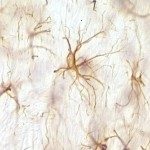Lien vers Pubmed [PMID] – 23553604
Hepatology 2013 Sep;58(3):932-9
Severe liver disease caused by chronic hepatitis C virus is the major indication for liver transplantation. Despite recent advances in antiviral therapy, drug toxicity and unwanted side effects render effective treatment in liver-transplanted patients a challenging task. Virus-specific therapeutic antibodies are generally safe and well-tolerated, but their potential in preventing and treating hepatitis C virus (HCV) infection has not yet been realized due to a variety of issues, not least high production costs and virus variability. Heavy-chain antibodies or nanobodies, produced by camelids, represent an exciting antiviral approach; they can target novel highly conserved epitopes that are inaccessible to normal antibodies, and they are also easy to manipulate and produce. We isolated four distinct nanobodies from a phage-display library generated from an alpaca immunized with HCV E2 glycoprotein. One of them, nanobody D03, recognized a novel epitope overlapping with the epitopes of several broadly neutralizing human monoclonal antibodies. Its crystal structure revealed a long complementarity determining region (CD3) folding over part of the framework that, in conventional antibodies, forms the interface between heavy and light chain. D03 neutralized a panel of retroviral particles pseudotyped with HCV glycoproteins from six genotypes and authentic cell culture-derived particles by interfering with the E2-CD81 interaction. In contrast to some of the most broadly neutralizing human anti-E2 monoclonal antibodies, D03 efficiently inhibited HCV cell-to-cell transmission.

